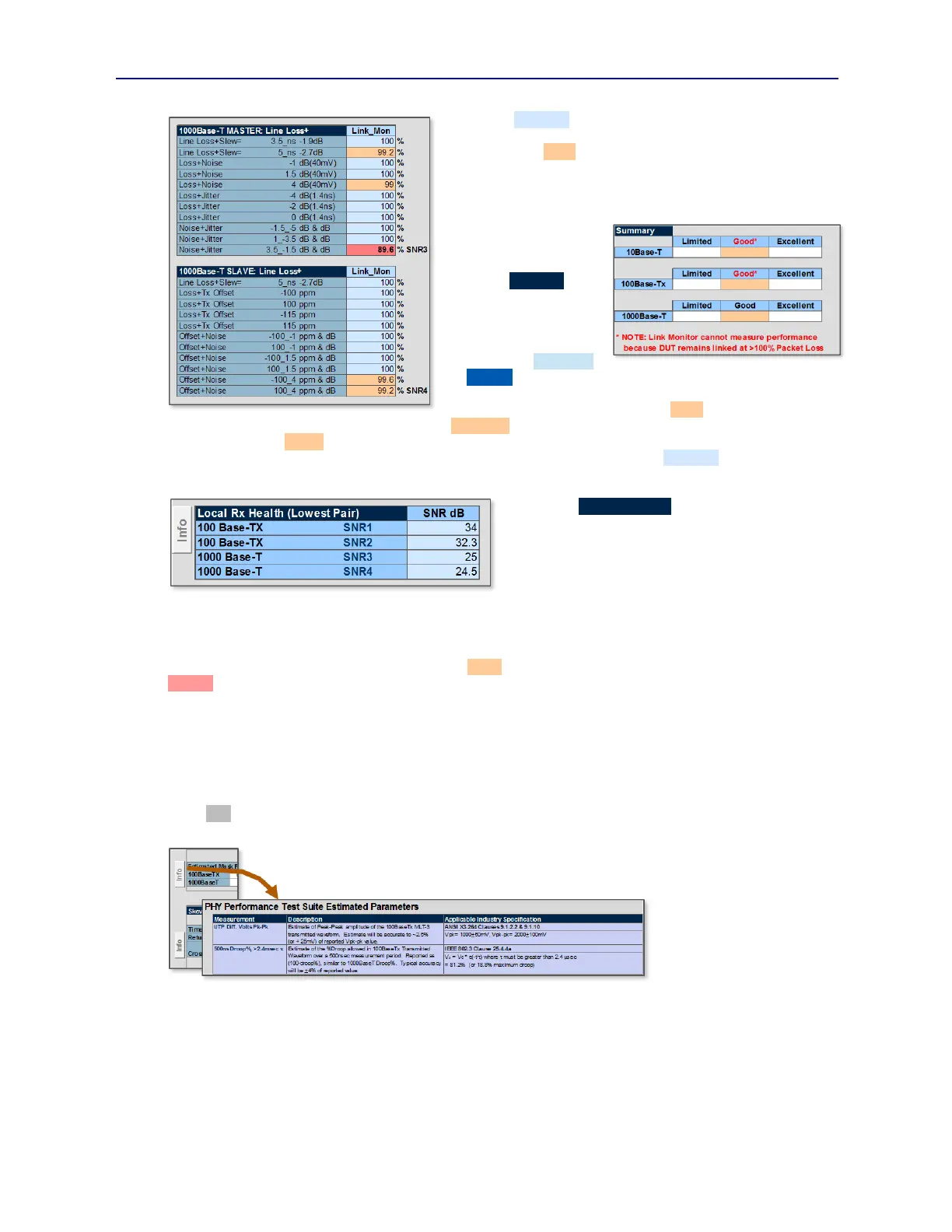PVA-3000 Reference Manual
December 2, 2019 Sifos Technologies
criteria for Excellent performance is better than 99.6% for
1000BaseT to 99.9% on 10BaseT for all applied impairment
conditions. For Good performance, the criteria is greater than 95%
link stability or packet flow for all applied impairment conditions.
These criteria are subject to fluctuate in the future as more
refinements are done to each of the receiver tests.
Receiver test
performance is
summarized by receiver
test in the Summary table
(see Figure 5.16).
The Excellent rating for
each link speed will only
occur if either Link Mon
or Packets method of
reporting was utilized and if the average of all results at all
impairments was above the criteria for Good performance. If the
Link Chk method of reporting was utilized, then the best possible
result in this table is Good* because proprietary features of the port-under-test prohibit use of Link Stability as a valid
indicator of receiver performance. This means, for example, that the only way to get an Excellent performance on
10BaseT ports or on certain 100BaseTx ports is to test with Packet Flow.
Finally, the Local Rx Health table (see Figure 5.17)
gauges the potential impact of applied impairments to the
test port where those impairments are being applied. The
test conditions SNR1 and SNR2 are taken during
100BaseTx testing with the most severe impairment of
Noise + Jitter. The test conditions SNR3 and SNR4 are
taken during 1000BaseT testing with most severe
impairment of Noise + Jitter (SNR3) and Offset + Jitter (SNR4). In all cases, the value reported for SNR1 – SNR4 is
the lowest SNR reading from all pairs. These four values will warn if there is any danger that a low Link Stability
reading or low Packet Flow reading could in any way be the result of the test port receiver getting into trouble with the
applied impairment condition. SNR readings below 23 dB will report as potential danger while SNR readings below
21.5 dB will warn of local test port receiver interference with receiver test results.
5.5.4. Configuring the Test Report Location
Users have full flexibility to direct the PHY Performance Test Suite reporting to user-specified locations (or sub-
directories) that may be DUT-specific. See Sections 2.3.4 and 3.4 for further information on this topic.
5.5.5. Standard Test Report Built-In Reference Documentation
Within the standard test report, specific information about each test and test parameter may be found by simply clicking
on the Info button adjacent to each test group. In Figure 5.19, information on estimated 802.3 parameters is accessed.
This information resides in the Notes tab (page) of the standard report.
5.6. PSE DC Magnetic Unbalance Testing
Ethernet Power Sourcing Equipment (PSE) consist of end-span switches and mid-span power injectors that combine
DC power up to 30 watts or more on the same twisted pairs that carry 10/100/1000BaseT signals up to 100 meter
distances. This allows Powered Devices (PD’s) such as VoIP phones, wireless access points, and security cameras to
operate independent of other electrical power sources.
Figure 5.16 Rx Performance Summary
Figure 5.17 Test Port SNR Monitoring
Figure 5.15 1000BaseT Receiver Test Results
Figure 5.19 DC Unbalance and DC Bias
